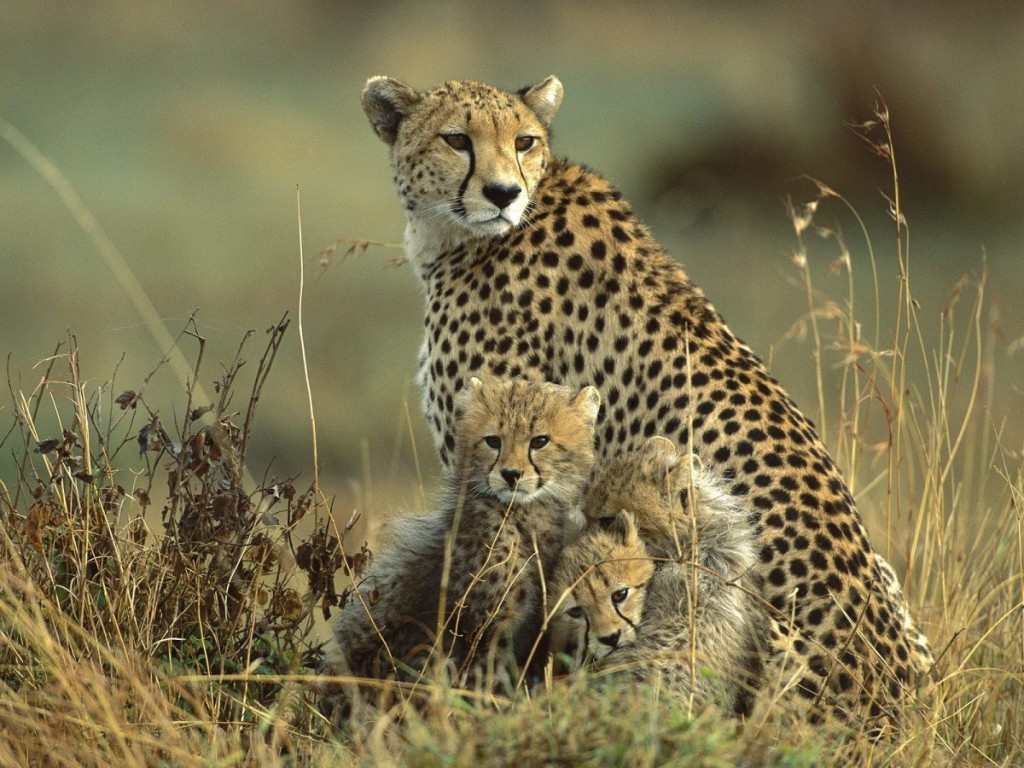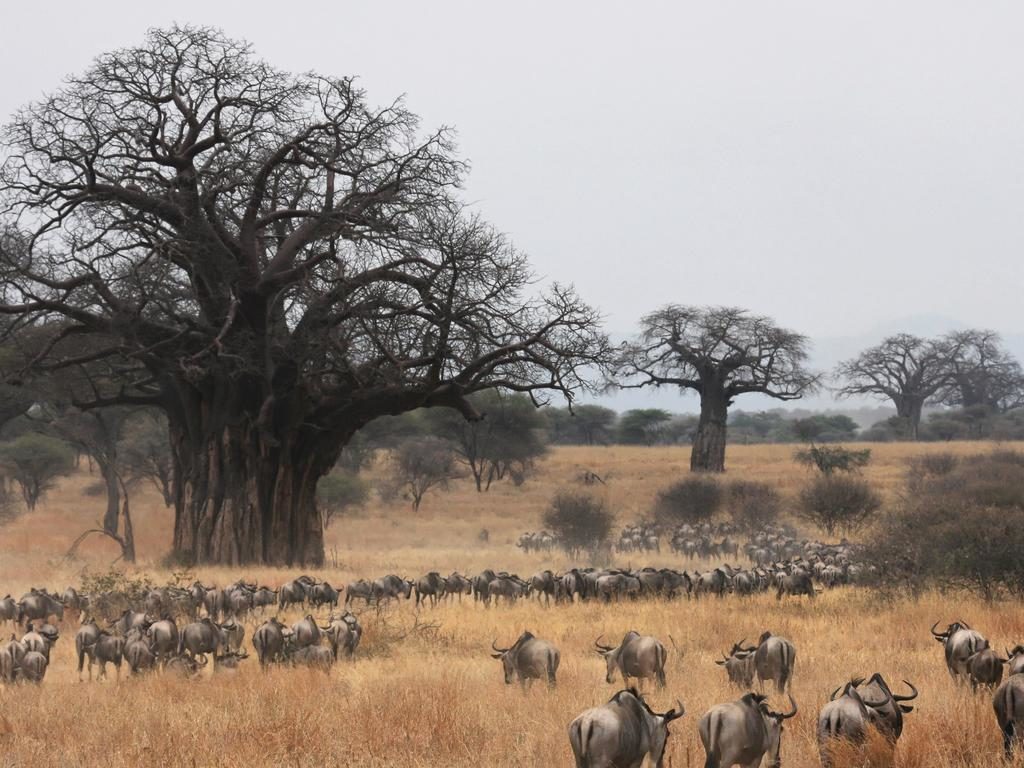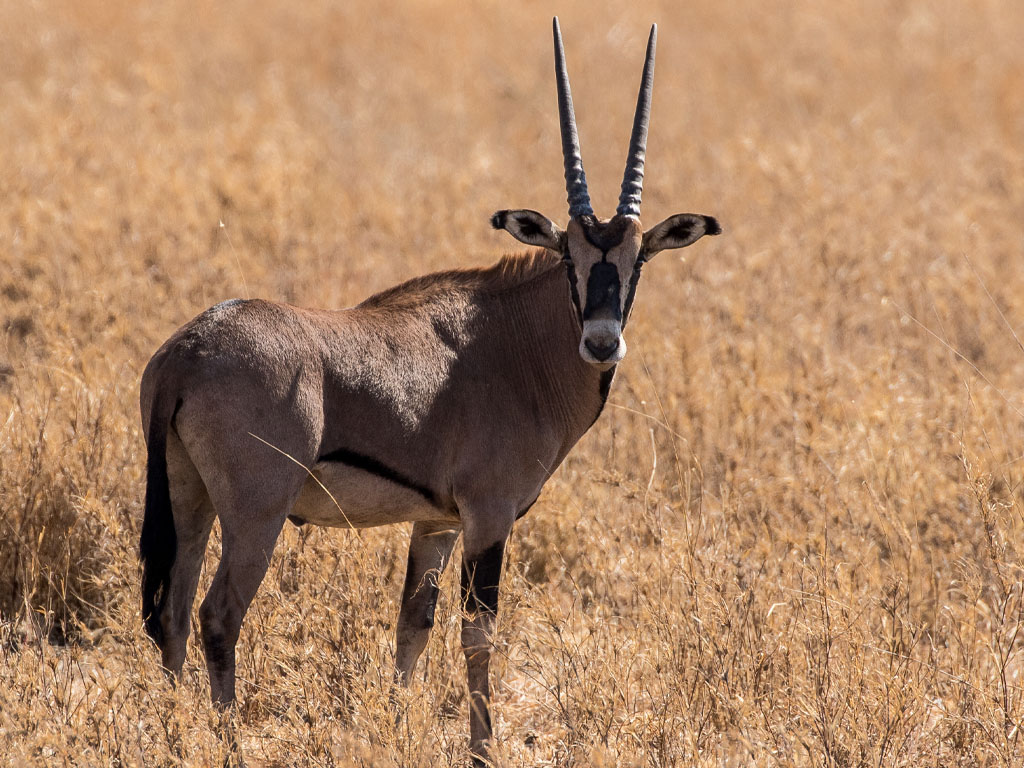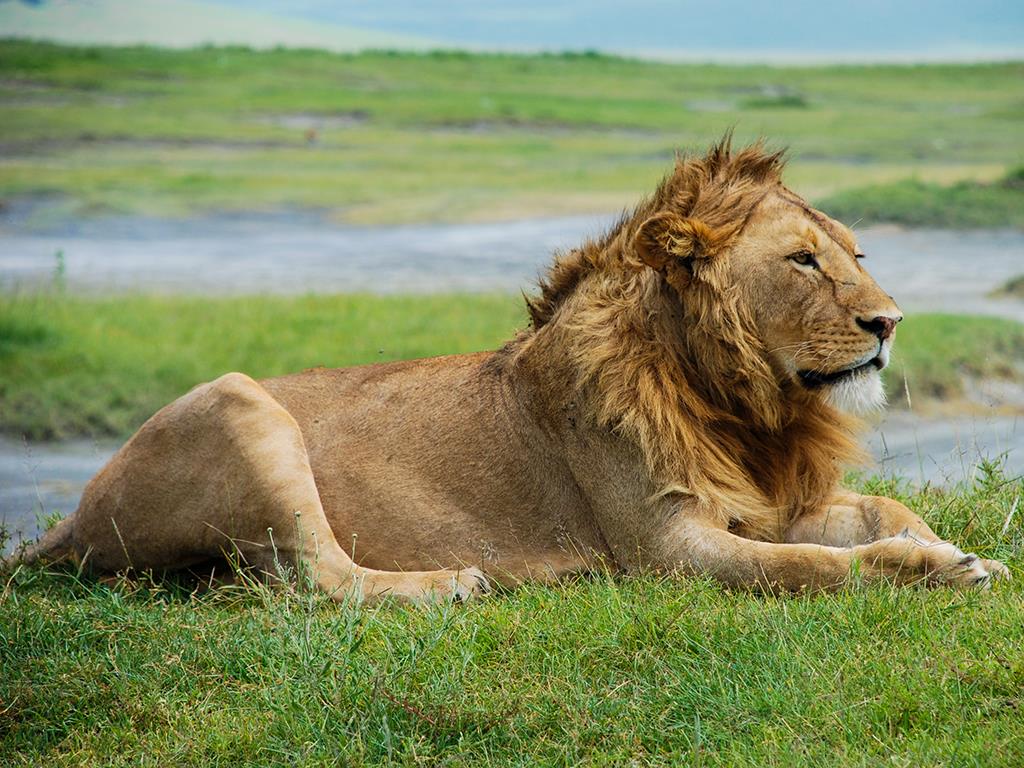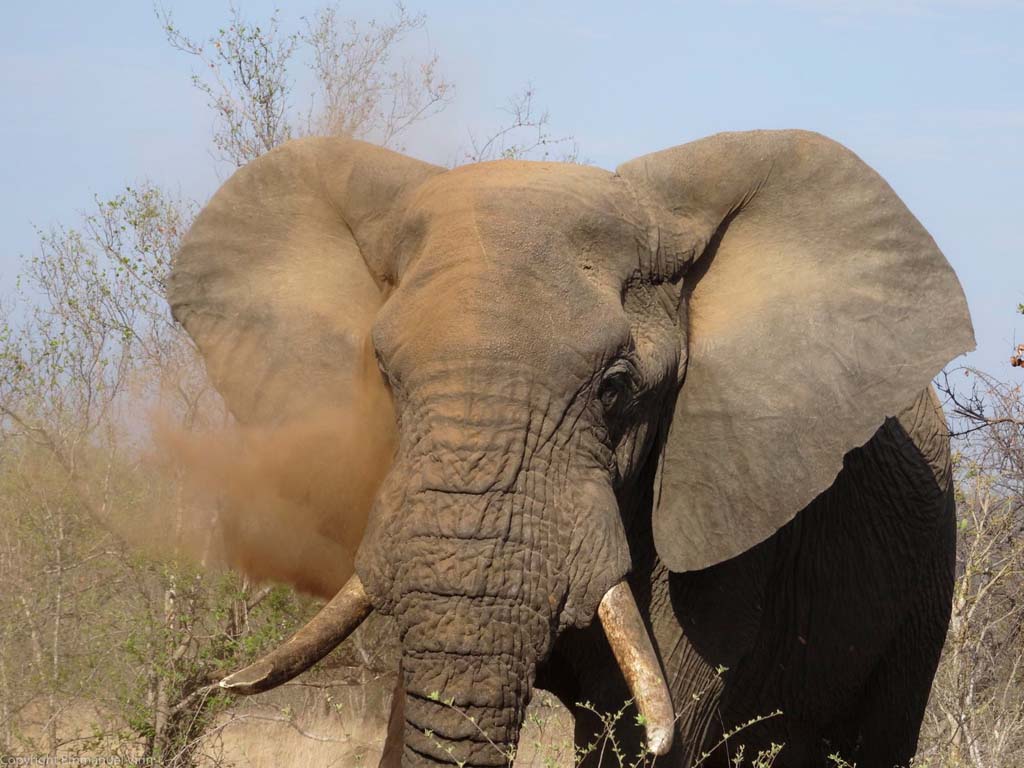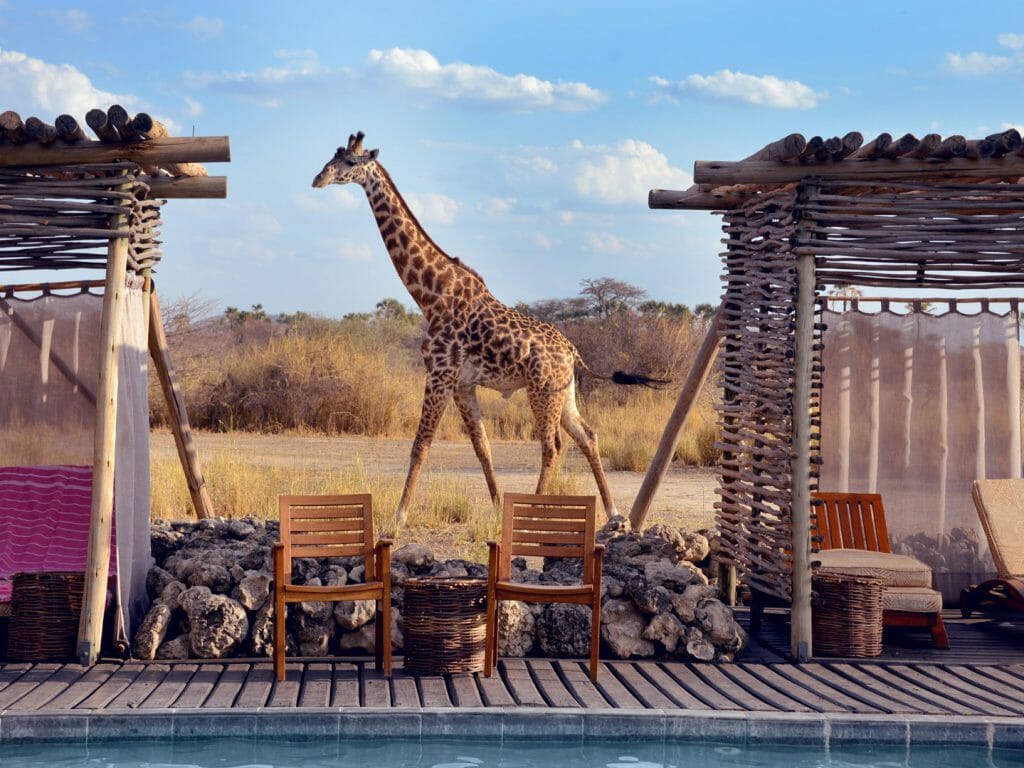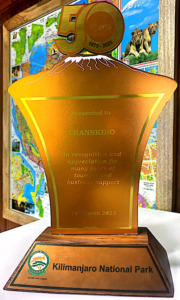Covering approximately 2,600 square kilometers, Tarangire lies to the south of large open grass plains of the southern Maasai land. Tarangire National Park is named after the Tarangire River, where great flocks of animals gather together in the dry season from June to November. This is the best time to visit Tarangire. Most of the other waterholes are dried out, so the flood is the only place where the animals can extinguish their thirst.
After the short rainy season in November, the animals wander in big flocks of wildebeests, zebras, gazelles and hartebeests, outside the borders of the park – some wander off to Lake Manyara, others all the way to Lake Natron close to the border to Kenya. First when the rainy season has passed, the animals turn back to Tarangire, where they arrive during the summer.
Several circuits are possible, Burungi to the west, Lamarkau to the south and Matete along the river. Acacia and baobab trees shelter animals seeking refuge near the river. The park is especially known for its elephants, which are more numerous than in the other northern parks. Apart from this, there are good chances of spotting buffaloes, giraffes, waterbucks, kudus, oryx, lions, leopards, hyenas, and if you are lucky, you’ll even spot the famous tree climbing pythons!
The park has a varied landscape consisting of open grassland with acacia trees and baobab trees, bush steppe, forests and swamps. In the whole area there are tsetse-flies, which makes the area unsuitable for cattle holding. This explains why Tarangire today has a status as a National Park.
Tarangire is not far away from the tarred main road between Arusha and Dodoma. The distance from Arusha to the gate of Tarangire is 115 km, or about 1 hour driving.

